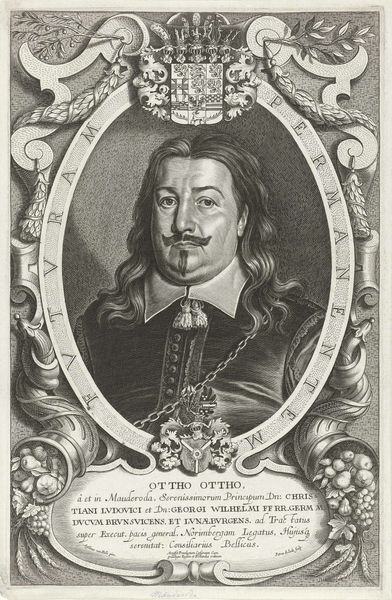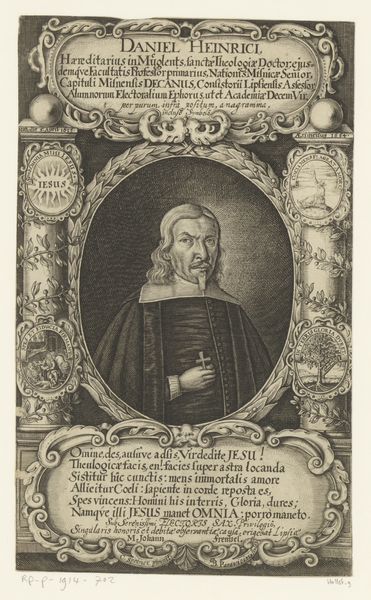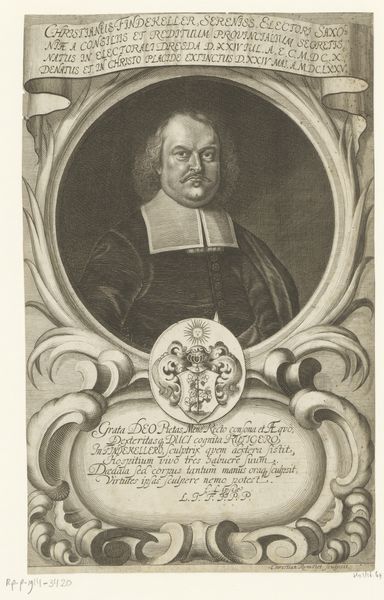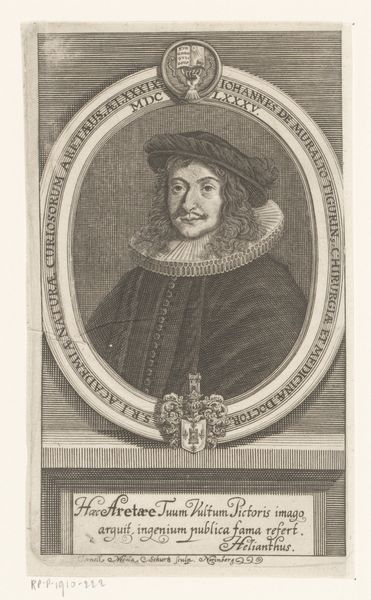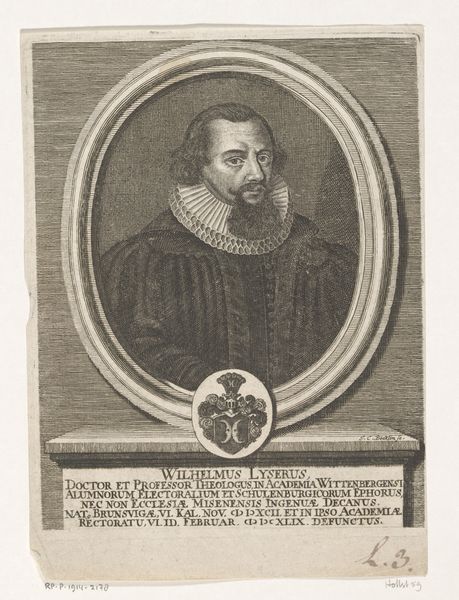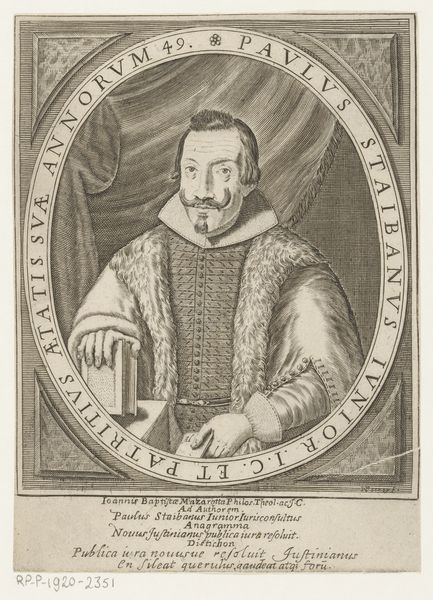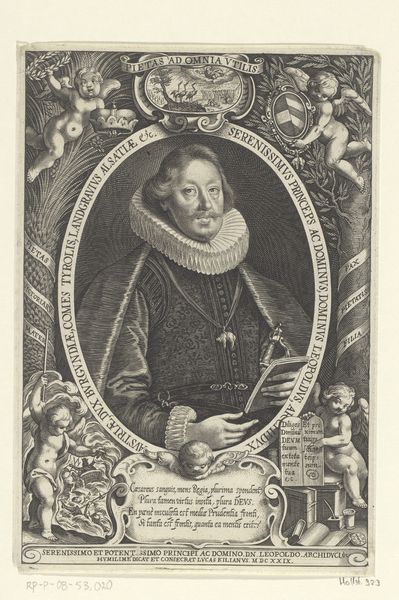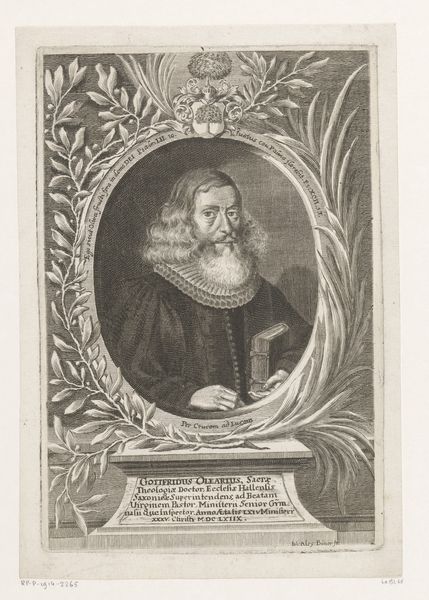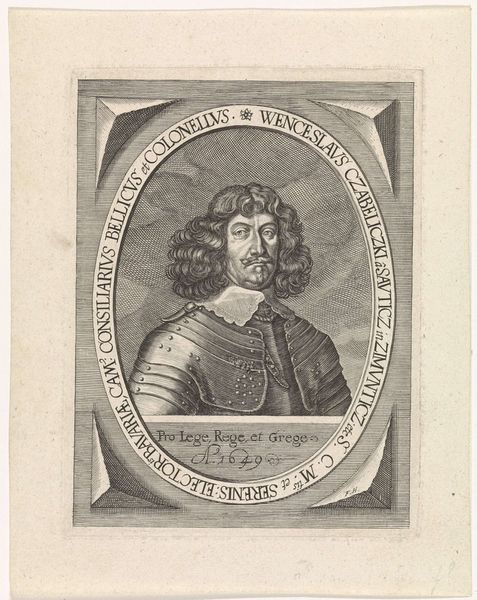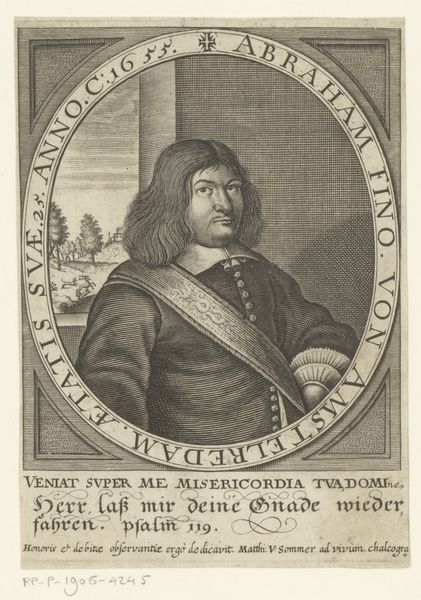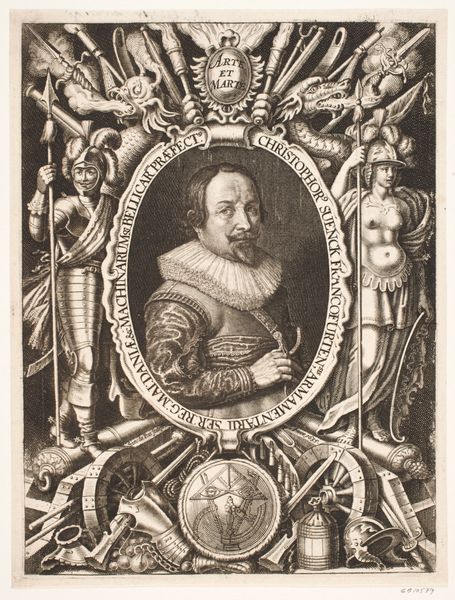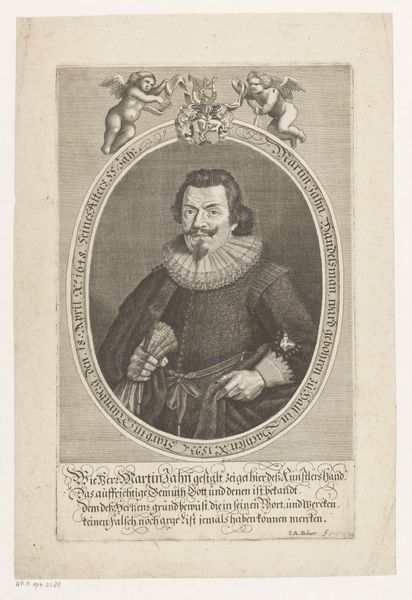
engraving
#
portrait
#
baroque
#
book
#
caricature
#
history-painting
#
engraving
Dimensions: height 225 mm, width 165 mm
Copyright: Rijks Museum: Open Domain
Curator: Welcome. Let’s turn our attention to this striking engraving: a portrait of Johann Michael Dilherr, dating roughly from 1648 to 1663, created by Johann Pfann. Editor: My first impression is one of formality, but also constraint. The man seems boxed in, framed almost aggressively. It's a portrait of someone important but the composition feels heavy. Curator: Precisely. The oval frame, cradled by what appear to be angels and a heavy curtain, creates a layered effect, focusing the viewer’s attention directly on Dilherr. Notice the crisp lines achieved through the engraving process, giving form to his features and costume. Editor: I’m also noticing that he is not centered. The frame and angels contribute to his leaning. This disrupts the balance, introducing a sense of unease despite his elevated status which is mentioned in the writing below. This man held several titles: director, scholar, and pastor. Who was he and why is the composition so restrictive? Curator: Dilherr was a prominent theologian and pastor. The symbolic elements—the angels, the book he holds—speak to his religious and intellectual pursuits. His formal wear speaks of a respected man. Editor: But observe the religious elements through a modern lens. Angels—messengers from heaven, watching him on one side, pulling back the curtain on the other, perhaps representing scrutiny? He’s grasping a book. Does it give him power, or weigh him down? His hand faces down; open, yet holding, making me think about the church’s stance in broader social politics during his life. Was he pushing back? Curator: That is an interesting interpretation. One could argue Pfann chose these symbols precisely to elevate Dilherr, adhering to Baroque conventions, reflecting his status. But I see your point of a restrictive posture for Dilherr with his upturned hand being held so unnaturally and stiffly. Editor: To look closely at art of the past opens a portal of looking more carefully at our own era. An image of status opens, here, to what could also be a life and a period of tension. Curator: I appreciate your perspectives which add greater depth. Indeed, this examination goes beyond aesthetics, and creates an historical understanding of Dilherr's portrait within cultural constructs of the time.
Comments
No comments
Be the first to comment and join the conversation on the ultimate creative platform.
